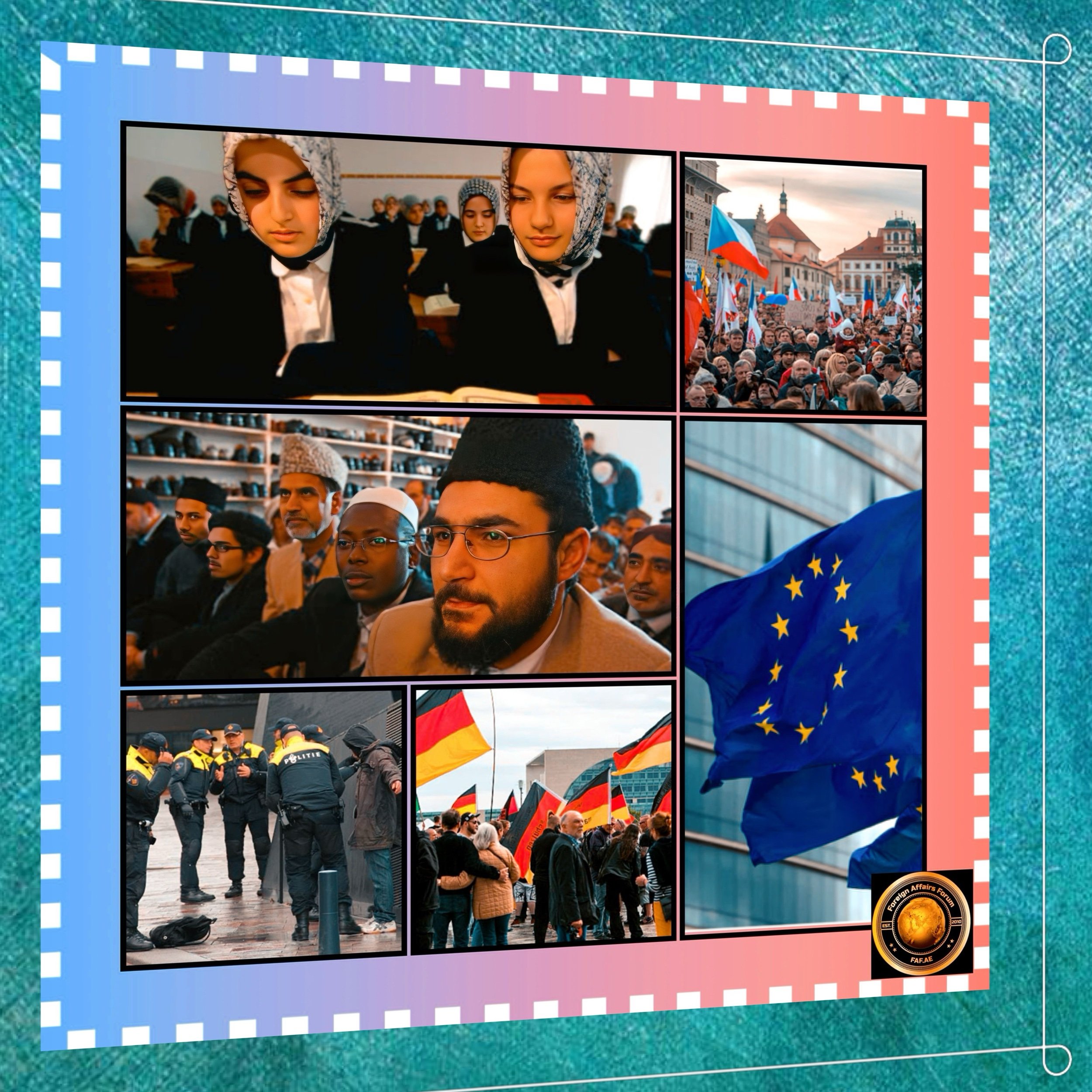Rising Concerns of Islamization in Britain: Examining Facts and Perceptions
Introduction
Before diving into a detailed analysis, it’s important to note that concerns about the “Islamization” of Britain reflect a complex interplay of demographic changes, political rhetoric, and social tensions.
While Muslim populations are indeed growing in the UK and across Europe, the actual figures and their interpretation vary considerably depending on sources and perspectives.
Current Muslim Demographics in Britain and Europe
United Kingdom’s Muslim Population
The United Kingdom has experienced steady growth in its Muslim population over recent decades. Islam is now the second-largest religion in the UK, with the 2021 Census recording just under four million Muslims.
Historical census data shows a clear upward trend: Muslim identification in England and Wales rose from 3% in 2001 to 5% in 2011, with projections suggesting it could increase to approximately 8% in the most recent census results.
This growth occurs against a backdrop of broader religious change in Britain. The percentage of people identifying as Christian has declined considerably, falling from 72% in 2001 to 59% in 2011, and was predicted to drop below 50% in subsequent measurements.
Simultaneously, those reporting “no religion” increased from 15% in 2001 to 25% in 2011, with expectations of further rise to around 33%.
European Context
Across the European continent, Muslims represent approximately 5% of the total population, with about 44 million Muslims living in Europe as of 2010 data. The European Union specifically had about 19 million Muslims, comprising approximately 3.8% of its population.
Between 2010 and 2016 alone, the Muslim share of Europe’s population increased by more than one percentage point, from 3.8% to 4.9%. This growth is attributed to both immigration and higher fertility rates among Muslim populations.
Which EU Country Has the Highest Muslim Population?
When examining EU countries by percentage of Muslim population, Cyprus leads with approximately 25.4% of its population being Muslim, primarily Turkish Cypriots with deep historical roots on the island.
However, in absolute numbers, France and Germany have the largest Muslim populations within the European Union:
France
Approximately 5.7 million Muslims (8.8% of the population) as of 2016, with more recent estimates suggesting this has risen to around 10% of the adult population by 2023
Germany
Approximately 5 million Muslims (6.1% of the population) as of 2016
United Kingdom (formerly EU)
About 4 million Muslims (around 6-7% of the population)
Due to historical factors, countries outside the EU but still within Europe have significantly higher percentages of Muslim populations, such as Kosovo (93.8%), Albania (80.3%), and Bosnia-Herzegovina (45.2%).
Projections and Future Trends
The Pew Research Center has developed several projections for Europe’s Muslim population through 2050. These models vary based on different migration assumptions:
Zero Migration Scenario
Even if all migration into Europe were to immediately and permanently stop, the Muslim population would still rise from 4.9% to 7.4% by 2050 due to demographic factors – Muslims in Europe are younger (by 13 years on average) and have higher fertility rates (one child more per woman on average).
Medium Migration Scenario
Assuming refugee flows stop but regular migration continues at recent levels, Muslims could reach 11.2% of Europe’s population by 2050.
High Migration Scenario
If the 2014-2016 refugee flows continue indefinitely along with regular migration, Muslims could constitute up to 14% of Europe’s population by 2050.
These projections have become focal points in debates about European identity and integration.
Concerns About “Islamization” in Britain
Public and Political Discourse
Concerns about “Islamization” have become increasingly prominent in British public discourse. Various media sources and political figures have expressed anxiety about the pace of demographic change and its implications for British culture and values.
Some prominent figures, like Nigel Farage, have publicly voiced concerns about the growth rate of Muslim populations, suggesting that “Muslims could dominate Britain by 2050”.
Similarly, former UK Home Secretary Suella Braverman warned that Britain could “fall into the hands of Muslim fundamentalism” and become an “Islamist state with nuclear weapons.”
These statements reflect a strain of political rhetoric that frames demographic changes as potential threats to national identity.
Cultural Integration Debates
A central aspect of the “Islamization” debate concerns cultural integration. Some commentators express concern about developing “parallel communities” that allegedly operate outside mainstream British cultural and legal frameworks.
Cultural landscape changes in areas with high Muslim populations have become focal points for these discussions.
The presence of religious institutions and legal frameworks has also drawn attention.
Reports indicate over 1,800 mosques across England and over 80 Sharia courts operating alongside British law.
While these Sharia councils primarily deal with religious divorces and family matters, their existence has become contentious in legal pluralism and national values debates.
Security Concerns
Security concerns also feature prominently in discussions about Islamization. According to a 2017 report cited in search results, the UK had the highest number of Islamist radicals in the EU, with estimates ranging from 20,000 to 25,000.
As of 2023, Muslim extremism reportedly represents a significant portion of MI5’s caseload.
However, it’s important to note that British Muslims themselves share similar concerns with the general population regarding Muslim extremism, with 63% expressing some level of worry.
British Muslims were also slightly more likely (66%) than others (63%) to report individuals to the Prevent program if concerned about radicalization.
Rising Islamophobia and Community Responses
Against these concerns about Islamization, there has been a documented rise in Islamophobia across Britain.
Home Office statistics reveal that nearly 40% of all religious hate crimes targeted Muslims in the year ending March 2024. The summer of 2024 saw significant anti-Muslim riots triggered by disinformation following attacks in Southport.
In response to these challenges, British Muslim communities have organized to develop strategies against rising Islamophobia.
In November 2024, an unprecedented gathering of Muslim community activists, organizations, and grassroots representatives met to develop a unified approach to combating anti-Muslim hatred.
Conclusion
The question of whether Britain is experiencing “Islamization” is complex and highly contested. While demographic data clearly shows growth in Muslim populations across Britain and Europe, interpretations of this trend vary dramatically.
For some, these changes represent natural demographic evolution and cultural diversification. For others, they trigger concerns about national identity, integration, and social cohesion.
What’s certain is that Britain, like much of Europe, is experiencing significant demographic and cultural changes that will continue to shape its social and political landscape for decades.
How these changes are managed—balancing respect for diversity with social cohesion, addressing both Islamophobia and extremism—will be critical to Britain’s future as a multicultural society.




